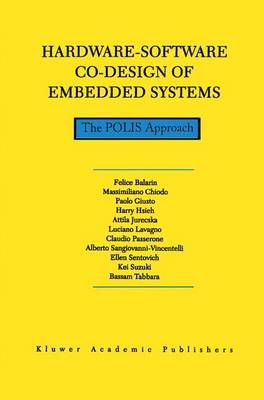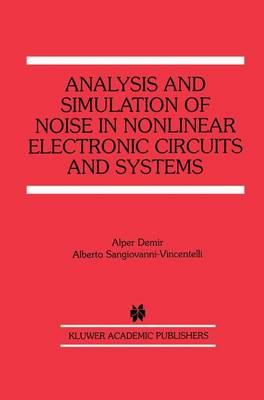The Springer International Series in Engineering and Computer Science
2 primary works
Book 404
Embedded systems are informally defined as a collection of programmable parts surrounded by ASICs and other standard components, that interact continuously with an environment through sensors and actuators. The programmable parts include micro-controllers and Digital Signal Processors (DSPs).
Embedded systems are often used in life-critical situations, where reliability and safety are more important criteria than performance. Today, embedded systems are designed with an ad hoc approach that is heavily based on earlier experience with similar products and on manual design. Use of higher-level languages such as C helps structure the design somewhat, but with increasing complexity it is not sufficient. Formal verification and automatic synthesis of implementations are the surest ways to guarantee safety.
Thus, the POLIS system which is a co-design environment for embedded systems is based on a formal model of computation.
POLIS was initiated in 1988 as a research project at the University of California at Berkeley and, over the years, grew into a full design methodology with a software system supporting it.
Hardware-Software Co-Design of Embedded Systems: The POLIS Approach is intended to give a complete overview of the POLIS system including its formal and algorithmic aspects.
Hardware-Software Co-Design of Embedded Systems: The POLIS Approach will be of interest to embedded system designers (automotive electronics, consumer electronics and telecommunications), micro-controller designers, CAD developers and students.
Embedded systems are often used in life-critical situations, where reliability and safety are more important criteria than performance. Today, embedded systems are designed with an ad hoc approach that is heavily based on earlier experience with similar products and on manual design. Use of higher-level languages such as C helps structure the design somewhat, but with increasing complexity it is not sufficient. Formal verification and automatic synthesis of implementations are the surest ways to guarantee safety.
Thus, the POLIS system which is a co-design environment for embedded systems is based on a formal model of computation.
POLIS was initiated in 1988 as a research project at the University of California at Berkeley and, over the years, grew into a full design methodology with a software system supporting it.
Hardware-Software Co-Design of Embedded Systems: The POLIS Approach is intended to give a complete overview of the POLIS system including its formal and algorithmic aspects.
Hardware-Software Co-Design of Embedded Systems: The POLIS Approach will be of interest to embedded system designers (automotive electronics, consumer electronics and telecommunications), micro-controller designers, CAD developers and students.
Book 425
Analysis and Simulation of Noise in Nonlinear Electronic Circuits and Systems
by Alper Demir and Alberto Sangiovanni-Vincentelli
Published 30 November 1997
In electronic circuit and system design, the word noise is used to refer to any undesired excitation on the system. In other contexts, noise is also used to refer to signals or excitations which exhibit chaotic or random behavior. The source of noise can be either internal or external to the system. For instance, the thermal and shot noise generated within integrated circuit devices are in ternal noise sources, and the noise picked up from the environment through electromagnetic interference is an external one. Electromagnetic interference can also occur between different components of the same system. In integrated circuits (Ies), signals in one part of the system can propagate to the other parts of the same system through electromagnetic coupling, power supply lines and the Ie substrate. For instance, in a mixed-signal Ie, the switching activity in the digital parts of the circuit can adversely affect the performance of the analog section of the circuit by traveling through the power supply lines and the substrate. Prediction of the effect of these noise sources on the performance of an electronic system is called noise analysis or noise simulation. A methodology for the noise analysis or simulation of an electronic system usually has the following four components: 2 NOISE IN NONLINEAR ELECTRONIC CIRCUITS * Mathematical representations or models for the noise sources. * Mathematical model or representation for the system that is under the in fluence of the noise sources.

